A kitchen garden is where herbs, leafy greens, vegetables, and fruit are grown for everyday use, as some beautiful flowers. Rather than grow a lot of one thing, grow different types of leaves and veggies in the kitchen garden so that there is always something to harvest, to take inside and enjoy right away. With organic food becoming very costlier nowadays, kitchen gardening is something everyone wants to try. The kitchen garden will give fresh, flavorsome veggies, herbs, and fruits and save money.
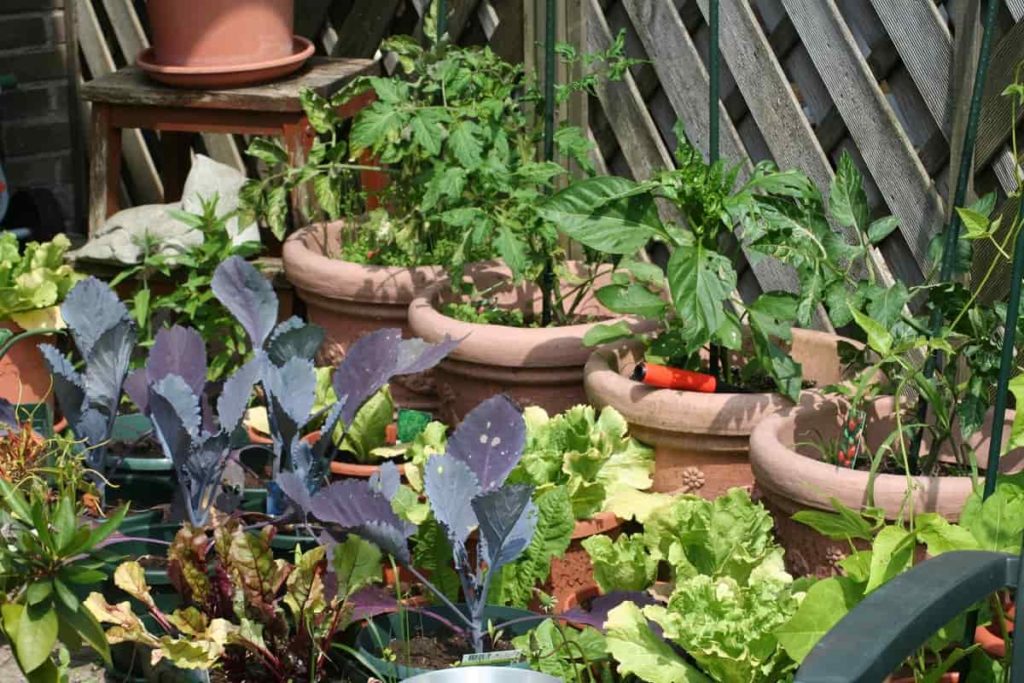
For curious hearts, kitchen gardening is not the same as regular gardening. A kitchen garden is generally smaller and attractively more pleasing. It blends with how the entire home looks in terms of design. Besides, the production is meant for fresh use and not for sale. Growing vegetables, herbs, and fruits, kitchen gardens are more practical and accessible. Do not forget; they are much prettier to look at, thanks to kitchen gardens’ recurring geometric patterns.
Homegrown produce is tastier and healthier, and when the vegetable plot is thriving, it could even cut down on your grocery bills. Growing fruits, veg, and herbs on your own in the garden are becoming so popular these days that sales of vegetable seeds overtake those of flowers. There are a few different ways of vegetable gardening in the backyard, but the approach remains the same when planning for the best garden plants.
Top 43 kitchen garden ideas for beginners
Dividing your space
Potager is the French word for the kitchen garden. It derives from gathering pot herbs for the soup or potage. And this way of growing fresh seasonal crops with flowers and herbs is a tradition that stretches way back. If a traditional vegetable plot is planned, aim for a neat, structured layout with a system of raised beds and paved paths. This formal style is called a potager.
Divide the available space into four areas, ideally with paths, and These four beds are then allocated to different plant groups. Use the first one for roots like potatoes, beetroot, and carrots. Use the second for legumes crops like beans and peas. The next one should be planned for salad and herbs, and the final should be a mix such as sweetcorn, courgettes, and leafy greens like chard and spinach.
Create an enchanting gate into a kitchen garden
One of the best considerable things about gardening in an enclosed space is not only traditional gardening but also the scope for gardening vertically. Arches and pergolas will be used to support climbing plants, such as beans and even pumpkins. Space limitations can lead to creativity & will lead to freeing up more space for crops at ground level. Planters and shelves can be fixed to a wall, and pots can be arranged on ladders or steps. Growing space can be doubled by hanging pots from a window box.
Grow vegetables in containers
Most vegetables grow well in containers that can move around in any space. One of the easiest vegetable-growing options is raised beds or giant planters. Use these containers as mini veg gardens to grow the veggies all year round.
Try to grow fruit trees in pot containers
If the space is much less and planning for the container route, try to grow lettuce, herbs, and tomatoes. A well-planned setup can create a mini grove in the plot. This design will be combined with a matching trellis to help support fruit trees. It is a good idea for decking, small patios, or even balcony gardening.
In case you missed it: How to Start Home Gardening in Asia: For Indoors, Outdoors, Raised Beds, Backyards, Terrace, Pots, and In Containers for Beginners
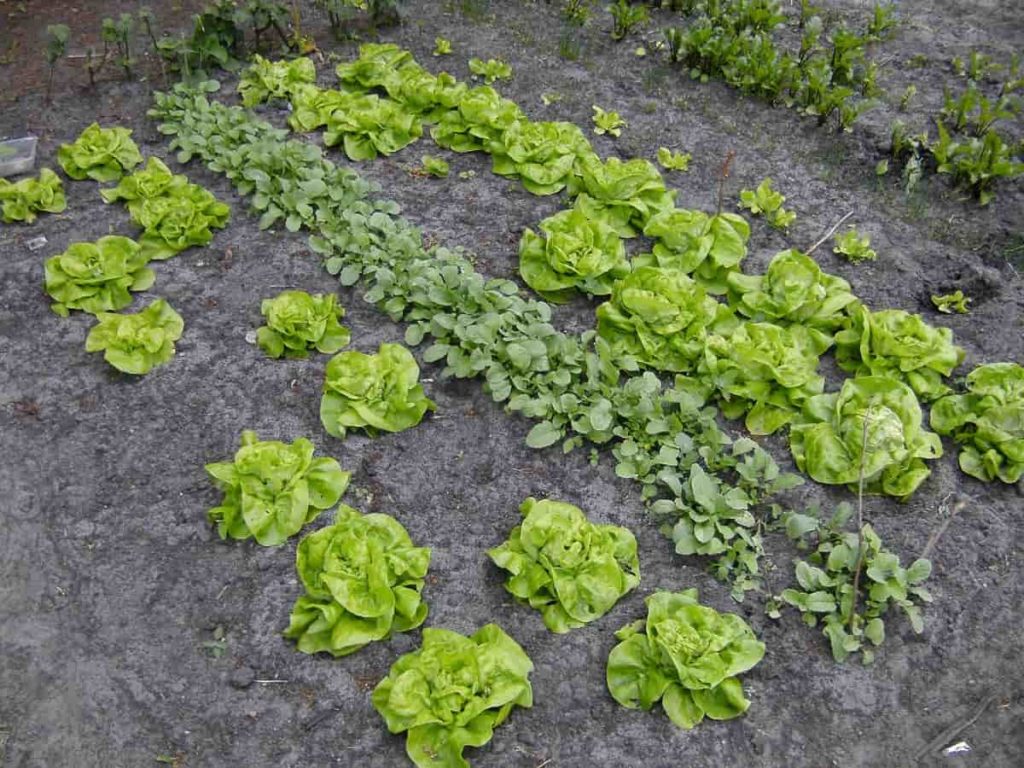
Choose crops that look good too
Choose vegetable types that are easy to grow and good for health. As well as the kitchen plot, plant them in among flowers or containers. Swiss chard is ruby red, and golden stems look so pretty that it is generally grown as an ornamental plant and gives a steady supply of leaves all year round. Beetroot is another good option with stunning red-veined leaves that can be eaten in addition to the globes and requires very little effort to grow. Others must include ripe strawberries, glossy tomatoes, peas in the pod, and pretty herbs.
Choose easy-grown green leaves
Salad leaves can grow all year round to give a constant supply of varieties like spicy Japanese mizuna, a leafy green that belongs to the mustard family, serrated green and purple leaves, mild-flavored mustard greens, and crinkly rocket. Red-veined sorrel and lettuce leaves are good options during summer too.
Create a small herb garden
Herb gardens are low maintenance and do not take up a lot of space, add instantly soothing and aromatic fragrances and look pretty too, so they quickly enhance the kitchen garden. The easiest herbs to grow are rosemary, thyme, oregano, sage, and mint. Plant and leave them to get it in even the most basic soils. Basil, parsley, and chives like moister conditions but are still easy to grow. Pot them up individually or make an herb garden in the ground with old bricks or edging tiles to separate them up.
Choose a good-looking plant varieties
Glossy tomatoes are a must-have in the kitchen garden. Growing tomatoes is quite easy. If garden space is limited, try a compact variety of cherry tomatoes that look fabulous cascading out of a window box or basket. It is easy to grow up on a windowsill from March onwards. Tomatoes need a fair degree of TLC involving regular watering, staking, pinching out of side shoots, and feeding. But it will be so worth it.
Try to grow lush berries
Homegrown strawberries are a million miles away from the kind in supermarkets. These are easy to grow, too, as long as they find a sunny area, use rich compost and protect them from heavy rains. Try growing these berries in a raised bed for easy maintenance, and they will produce plenty of fruits, all potential new plants that can be potted up to keep self-sufficient.
Try easy raised beds
One of the easiest vegetable-growing options is raised beds or giant planters. Plant care is also an easy task at eye level, as there is a chance to observe what is happening exactly. Choose a sunny spot, and fennel will shoot up to add structure. The feathery foliage and floaty yellow flowerheads look good, plus the fennel is delicious. It is very simple to grow from seed, plant it straight into the outside soil from June to August, then sit back and let it do its own thing.
Plan for vertical space utilization
If the garden space is small or limited to a balcony or terrace, consider growing plants upwards to use most of the space. Vegetables can be grown in this way, but it also makes fruit trees an option.
In case you missed it: Top 50 Basic Gardening Tips for Beginners: That Every Gardener Should Know
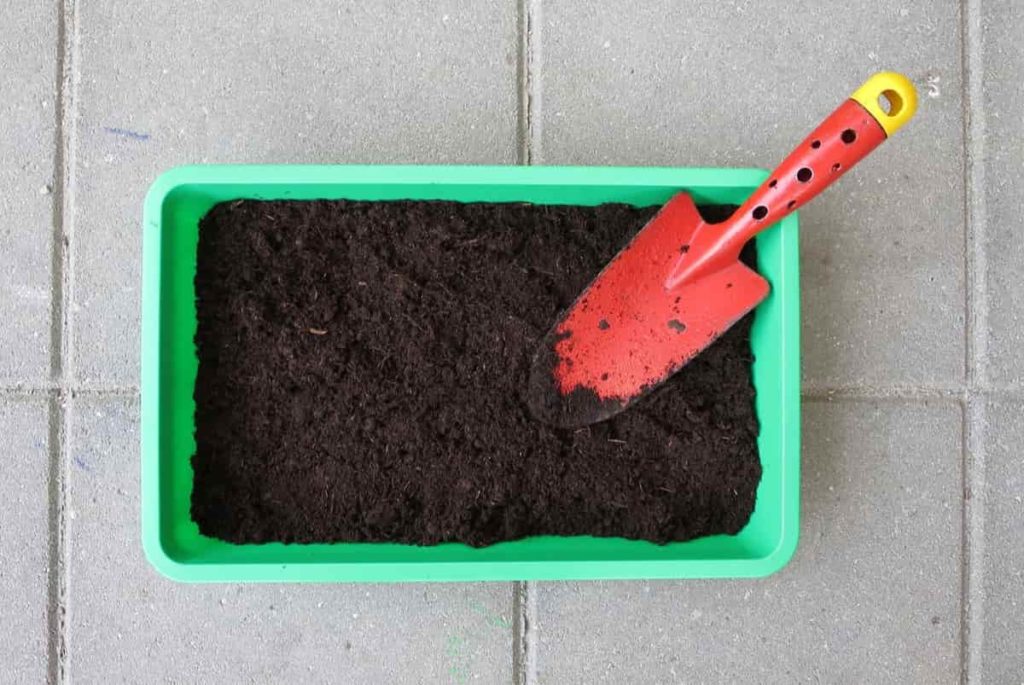
Enrich the soil
Vegetables take a lot more from the soil than flowering plants, so to get decent crops, it is required to feed the soil by adding rotted manure or compost to improve the nutrients in it, then apply fertilizers to top up the nutrients. Always check the type of soil the vegetable growing prefers. For example, carrots need sandy, well-drained soil. Add a general-purpose fertilizer a week or before planting, ensuring it is raked well.
Add color and drama
Grow a few chilies in a sunny window box or large pot; each plant will produce dozens that can be used fresh or dried later. They look beautiful, too, especially when they turn deep red. Plant the seeds indoors in March and pot them up when they are around 10cm in height, and the first flowers appear. They need full sunlight and a sheltered spot to keep on delivering.
Get a greenhouse
To make the kitchen garden truly productive, go under the cover. Add a greenhouse, which can grow more by starting earlier in the year, extending the growing season. A wide variety of styles are available and can be seen in the surroundings, from traditional to contemporary, and there is sure to be one for you, whatever the size of the garden space.
Keep the garden green with grass ways
try planting just one type of vegetable in each raised garden bed. That way, it’ll be easy to know the effect is orderly and structural. Choose grass pathways between the beds to soften this more formal approach. It can add to all the lush green tones in the height of summer, giving the garden space a soothing vibe.
Try to make a garden on the terrace
Everyone will not have the space for a sprawling veg patch at the bottom of their plot. For modern, urban, or smaller spaces, a portion of the terrace can be used and converted to create a functional kitchen garden setup. Positioning crops near the house means they will be quick and easy to access for midweek meal cooking.
Choose raised planters for small spaces
There is not always the best way if the kitchen garden ideas are brought into a courtyard or very small space. Instead, try opting for a raised planter. It will look great planted with a few veggies. Plus, it makes access to maintenance easy. It is a better choice for beginners who want to try growing crops before fully committing to setting up their garden.
Make an easy-care compost system
Preparing compost at home is a great way to save on costs and can be made by the eldest potato peelings, banana skins, and old coffee grounds. Many different compost bins can be added to the garden, which can be built own. A Subpod Grow Bundle is a garden, worm farm, and compost system that can compost scraps and feed your garden simultaneously, so the ultimate hands-off setup for a hobby gardener.
Use a stepladder to grow herb garden
Herbs are a great starter crop for budding kitchen garden enthusiasts. They’re super simple to grow, add a ton of flavor to dishes, and look lovely. Dill and parsley are favorites for most people, but keep an eye out for new varieties.
Chocolate mint will make a great addition to desserts, and Thai Basil adds a lovely hint of aniseed to Asian dishes. Plant the herbs in terracotta pots and stack them up on an upcycled stepladder for an attractive focal point that uses most of the garden plot vertical space. The result lead to a low-maintenance herb garden with a Mediterranean feel.
In case you missed it: Best Practices to Grow Peanuts/Groundnut at Home: Check How this Guide Helps Beginners
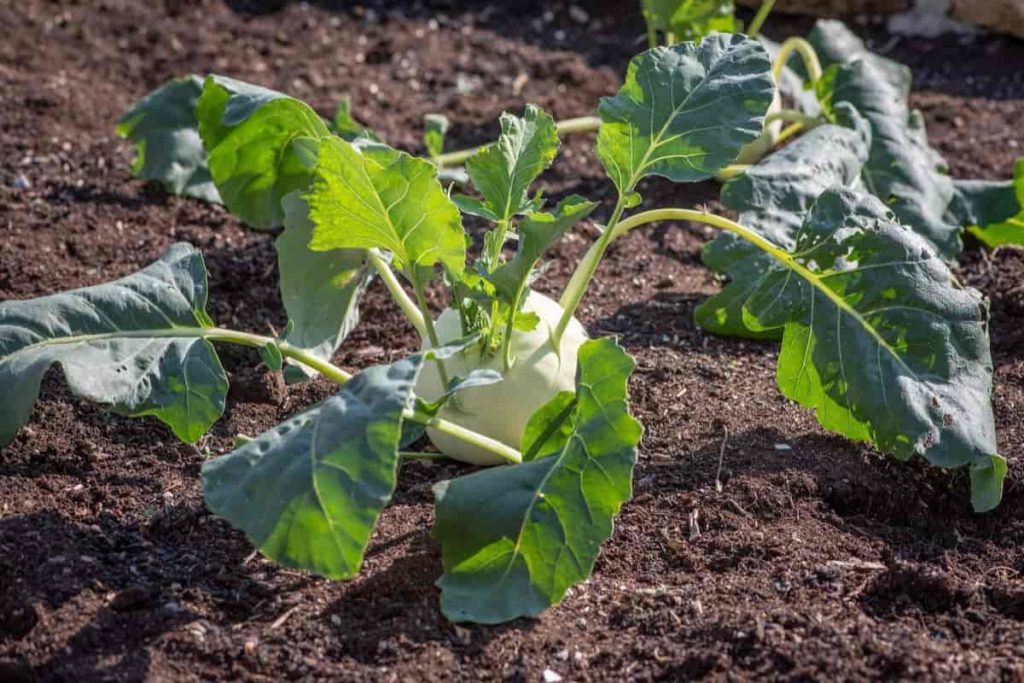
Try with companion planting
companion planting is growing plants together to get benefit one another. For example, many herbs will help to deter insects like carrot root fly and onion fly because of their aromatic fragrance and are well-suited for growing along with vegetables.
Other plants will also be grown and can be considered sacrificial crops. These plants also distract aphids and other pests away from cabbages and another leafy veg. Flowers attract insects, and many of these insects attack and kill pests. These insects will also help to pollinate fruit-bearing vegetables, such as peppers, tomatoes, cucumbers, and squash, to have bigger harvests.
Use plant supports
Plant supports are ideal for helping climbing plants flourish. This design looks gorgeous, adorned with pretty sweet peas, but would also be brilliant for climbing beans. Choose weather-proof materials like high-quality galvanized solid steek for a long-lasting feature to see this supports through many summers.
Try kitchen garden on decking
Kitchen garden ideas can be used to uplift a decked space, providing a fresh flourish of greenery to that space. Try to plant salad leave plants; they are positively brimming with luscious. To use the decking space as a kitchen garden, take some large containers, plant them with veggies, then arrange them close to one another. These containers in decking will lead to a portable vegetable plot.
Make an archway for climbing veg
This making archway is another fabulous idea for growing runner beans, broad beans, or peas. Once these crops advance, they will climb vigorously and can easily be trained over an archway for a show-stopping feature in the garden’s center. It’s the best way to make kitchen garden ideas even more enchanting and will draw the eye to that. Train a couple of plants over a seating spot, and the shaded canopy can provide a lovely retreat and take in the view.
White pots can be for small kitchen
The appearance of the pots plays a major role in making a kitchen garden look. Adding white pots to grow herbs can work even in a small kitchen.
Convert the window sill to a small garden
When there is no space in the home for a kitchen garden, a window sill can be used for planting veggies and used as a kitchen garden. Place some trays on sills and add soil to them. Plant the herb seeds in that soil to start the window kitchen garden on its own.
In case you missed it: A Guide to Understand Vertical Urban Farming/Gardening: Check How this Helps Beginners
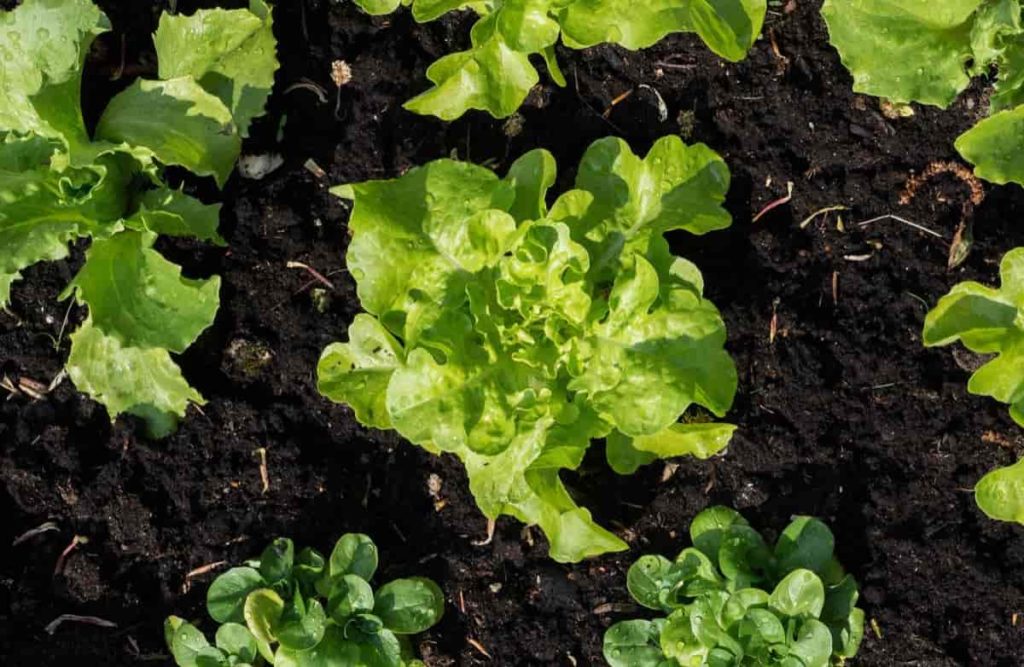
Use the mango containers
With some modifications, use the mangoes containers to plant veggies in the kitchen garden. These containers can be used to grow perpetual plants and make a good decor piece too.
Use corners of the kitchen to create a garden
an empty corner in the kitchen near the window can be used to place the container and grow plants. Create corner shelves mounted on the wall and place pots on them. Expose to sunlight for some time and water them regularly.
Use buckets to create a kitchen garden
Even old buckets can be used to plant herbs and vegetables, and no need for too many arrangements to have a kitchen garden. Keep these buckets on the terrace or in the backyard.
Extend kitchen window for kitchen garden
An extension under the kitchen window to plant vegetables can plan for the small kitchen garden. It can be a wall-mounted metal extension to keep plant beds.
Use the traditional kitchen garden method
Create a bamboo roof on the terrace to grow creepers. Pumpkin, peas, watermelon, cucumbers, etc., can be grown in the kitchen garden. These garden ideas are the traditional forms used since long ago.
Raised bed kitchen garden in the backyard
A raised bed garden should be a good idea to plant veggies in the backyard. However, it is a bit costly in the beginning stages. But once settled, it can be worthful.
Place containers on the wall above the water sink
Use the wall above the kitchen basin by mounting shelves to place the containers with vegetable plants. Furthermore, it will be easier to fertilize them. Watering them and taking proper care can be easily done by this.
Use flower pots
Do not stress about planting herbs inside the kitchen. Buy flower pots and fill them with herbs and vegetable seeds. Do not overstuff one pot with too many plants.
Make a stair structure on the window
One of the best ideas for a kitchen garden in flats is making a stair structure on the window to place the containers. This structure will give lots of space without blocking the window.
Hang your planters from the ceiling
If there is no space at home for a kitchen garden, the nest is to hang planters from the ceiling. Choose a distant part, hang planters from the ceiling, and avoid the part above the oven.
Framed plants for maintaining the decor
If the home is well decorated, create a kitchen garden that suits the home. Use photo frames to create an ecstatic look apart from having a kitchen garden on the walls. Implement this idea in commercial offices, shops, etc., to keep flowering plants.
In case you missed it: Urban Gardening Ideas for Beginners: Tips, Tricks, and Techniques
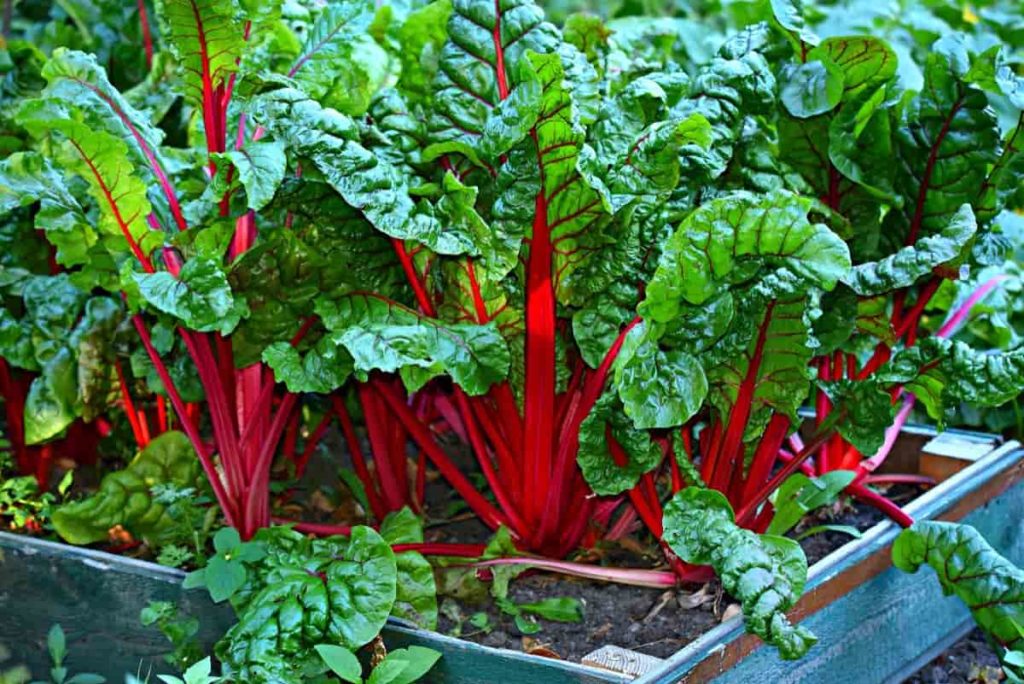
Tire garden
Use the worn tires to plant the veggies in the kitchen garden. Cut the tire to remove the inner rims. Place it on the ground to form a circle and fill it with soil and manure. The tire garden can be used to grow herbs like rosemary, fruits like strawberries, and vegetables.
Apply simple drip irrigation in the garden
A simple drip irrigation garden can be established with used plastic containers and a wall (or a pole). The best container size should be 5-liter jerry cans. The cans are cut so they would be easy to fix on the wall or a pole and placed vertically above another. Water can with a hole at the bottom place above the container from which water would drip when the cover is open
Try a micro kitchen garden
The micro garden is simple to establish and best suited for city culture homes, with nothing more than a balcony to grow plants. It makes use of plastic containers like buckets to carry soil and manure. Hang these buckets from the balcony ceiling or place the buckets on the floor. The micro garden should be watered regularly based on the plant types.
The multi-stair gardens
This garden uses sacks and nets. Holes are cut out and properly spaced on the sack. Soil mixed with manure is then placed in it. Ballast is stacked at the center of the sack to form a midrib through which watering can be done. The sack is pulled up to it is full and upright. Vegetables, especially spinach and green collard, are transplanted from a nursery into the holes on the sack wall.
Food robe garden
The food robe garden is a vertical farm garden that combines micro-gardens and a vertical wooden structure. The food robe structure is strong enough to carry the weight of several micro gardens. The height inside the shelves is determined by the natural height of the veggies grown.
Vegetables to grow easily in the kitchen garden
- Cucumbers
- Carrots
- Radishes.
- Chilli.
- Beets.
- Green beans.
- Tomatoes.
- Bitter gourd.
- okra
Herbs to grow in kitchen garden
- Lettuce.
- Peppermint
- Basil
- Coriander
- Lemongrass
These are some vegetables and herbs that can easily grow in the kitchen garden but can also grow fruits, spices, flowers, and so much more.
Advantages of kitchen garden
- Supply fresh fruits and vegetables high in nutritional value.
- Supply toxic chemicals-free fruits and vegetables.
- Save money on the purchase of vegetables.
- Vegetables harvested from a home garden taste better than those purchased from the market.
- Effective utilization of kitchen wastewater and kitchen waste materials.
- Exercise to the body and mind.
- Aquaponic Farming at Home: A Step-By-Step Guide
- Profitable Village Farming Business Ideas in 2024
- High-Yield Aquaculture: Fast-Growing Fish for Farming
- Effective Fish Pond Construction Techniques for Beginners
- Irrigation and Water Management in Pineapple Farming
- Blossom to Harvest: Mastering Flowering and Pollination in Papaya Farming
- Pig Fattening Essentials: From Selection to Sale for Beginners
- Raising Wagyu Cattle: A Complete Guide for Premium Beef Production
- Soil Types and Their Water Holding Capacity
- Optimizing Irrigation Schedules for Coconut Groves for Enhanced Yield
- Espresso Your Garden: Coffee Grounds for Healthier Acid-Loving Plants
- The Best Soil Mix for Snake Plants: How to Mix Your Own Snake Plant Soil
- Green Thumb Success: Expert Tips for Cultivating Greenhouse Beans All Year Round
- Bloom All Year Round: The Ultimate Guide to Indoor Hyacinth Care
- Eco-Friendly Gardening: How to Make Liquid Fertilizer from Kitchen Waste
- Ultimate Guide to Grow Anise in Pots: Explore Seed Propagation to Harvesting
- Guide to Raising Chester White Pigs: Discover Breed Facts to Growth Management
- Mastering the Elegance: The Ultimate Guide to Weeping Cherry Tree Care, Planting, and Maintenance
- Ultimate Guide to Planting Garlic in Grow Bags: Growing Strategies for Beginners
- How to Fix Spider Plant Leaf-Related Problems: Natural and Organic Remedies
- 10 Reasons Why Your Tulsi Plant is Shedding Leaves: Home Remedies and Solutions
- Optimizing Growth and Yield: The Advantages of Palm Bunch Ash Fertilizer
- Utilizing Neem Oil Extract as a Natural Pesticide for Hydrangea
- From Soil to Harvest: Various Ways in Which Farmers Can Use AI Tools
- Steps to Encourage and Induce Citrus Flowers: A Comprehensive Guide
- How to Fix Snake Plant Leaf-Related Issues: Natural and Organic Remedies
- Transform Your Garden into a Fragrant Oasis with Raat Ki Rani (Night Blooming Jasmine)
- Discover the Ideal Chicken Breeds for Philippine Farms
- How to Create a Poultry Egg Farm Business Plan for Profits
- Grow Lemon Cucumbers Like a Pro: Insider Techniques for Bountiful Yields
- Ultimate Guide to Caring for Your Pink Princess Philodendron: Tips for Thriving Variegation
- Areca Nut Profit Per Acre: Calculating Yield and Cost of Cultivation
- How Kaveri Chicken is Becoming a More Profitable Breed in Indian Backyards
- Transform Your Barn: 9 Steps to Convert a Horse Stall into a Chicken Coop
- Exploring Suffolk Sheep Disadvantages with Limitations and Challenges
- Guide to Solving Potted Lemon Tree Problems: How to Revive Lemon Tree in Containers
